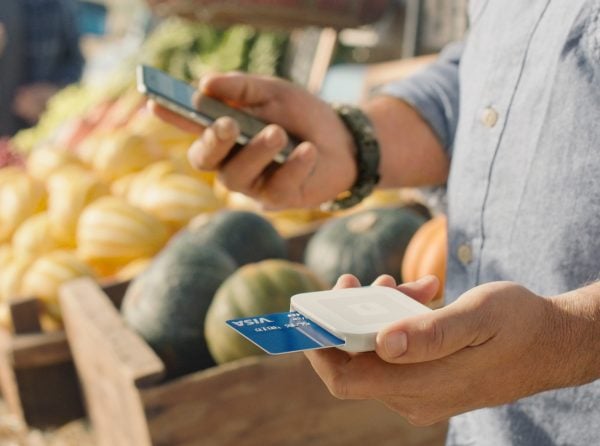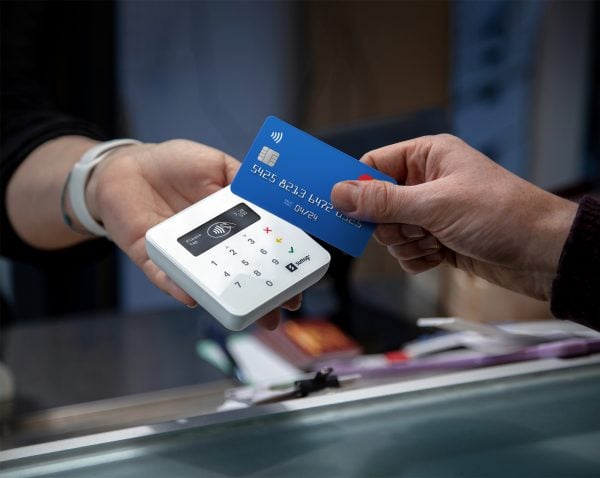SumUp vs. Square: Which Is Right for Your Business?
SumUp and Square both offer low-cost ways to accept card payments.

Many, or all, of the products featured on this page are from our advertising partners who compensate us when you take certain actions on our website or click to take an action on their website. However, this does not influence our evaluations. Our opinions are our own. Here is a list of our partners and here's how we make money.
SumUp and Square both provide the hardware, software and payment processing that let small businesses take payments in person, through invoices and over the phone.
While both companies offer low-cost hardware and payment processing ideal for small businesses, Square’s deeper set of software features can better support growing companies as their needs change, making it the best choice for budding entrepreneurs. However, SumUp’s simple user interface and low payment processing rates make it a strong contender for businesses that prioritize keeping costs as low as possible over having access to supporting services.
Deciding factors
| SumUp | Square | |
|---|---|---|
| Hardware | Good. SumUp has more low-cost options than Square, with three small handheld devices to choose from, including two with a free cellular connection. However, no higher-end options, like a touch-screen terminal, are available. | Excellent. Options include two low-cost card readers that pair with a phone, a mobile handheld device with a built-in printer, a stand for a tablet and a register with a large touch screen. |
| Hardware pricing | Excellent. $19-$99. | Excellent. Free to $799. |
| Software | OK. Item catalog in app provides a basic, POS-like experience for merchant. Limited reporting tools. | Excellent. Industry-specific point-of-sale versions for retailers and restaurants in addition to its standard POS. |
| Software pricing | Excellent. There are no contracts or monthly fees to use SumUp. | Excellent. Square doesn’t require long-term contracts and has a solid free version of its POS system in addition to paid versions. |
| Payment processing pricing |
|
|
| Add-on features available | N/A. SumUp does not currently provide additional services. | Excellent. Customer loyalty program, digital marketing, payroll and team management. |
| Customer service | Good. Phone support available Monday to Friday, 9 a.m. to 7 p.m. ET. | Excellent. Phone support available 24/7 for paid plans. Phone support available Monday to Friday, 6 a.m. to 6 p.m. PT for free plan. |
Why Square is the better choice

Accommodates complex needs
Square has a platform robust enough to support small and medium-sized businesses whereas SumUp primarily focuses on micro businesses, new entrepreneurs and freelancers.
For businesses that need features such as fully functioning POS systems, large touch-screen displays, complex reporting tools, customer loyalty programs or marketing support, Square is clearly the better match.
Offers powerful free tools
Square’s basic POS system has no monthly fee and doesn’t require a contract. While SumUp has announced plans to release a POS system, Square’s has been widely used for years. It can handle tasks SumUp can’t, like bar-code scanning, providing low-stock alerts, supporting a free online store and employee time tracking. Square also offers Tap to Pay on iPhone, which lets merchants accept card payments using only a regular iPhone with the Square POS app. Customers hold their cards or their own iPhone wallets near the merchant's phone to pay.
There's room to grow
Square’s modular pricing means businesses that don’t need many additional features today can quickly add features in the future if their needs change.
In addition to its low-cost hardware, the company offers touch-screen terminals and mobile devices with built-in printers. SumUp doesn't offer higher-end hardware you might need in the future.
Read our full Square POS review.
Why you might want SumUp instead

Card readers aren’t tied to your phone
Both companies provide low-cost all-in-one card readers that can operate without personal devices. But SumUp’s all-in-one card readers, the Pro and the Solo, are more compact than the Square Terminal and are more affordable, too.
Additionally, while the Square Terminal doesn't require a personal device, it still needs a Wi-Fi connection. If you have a mobile business like a farm stand or food truck, you'll need to figure out a way to connect to the internet. SumUp bypasses this issue because the Pro and Solo work anywhere, connecting directly to cell networks without any extra hardware or Wi-Fi, which could be a huge convenience factor for businesses that travel.
SumUp |
Invoicing is simple and cheap
You’ll save 15 cents per online transaction with SumUp compared with Square when customers pay an invoice. It might not be a lot, but hey — it’s cheaper. On the back end, you’re able to see a history of transactions for each customer, track outstanding payments and see whether a customer has opened your email invoice.
Read our full SumUp review.
Other low-cost options to consider
PayPal POS: Another affordable option with a free POS system
Pricing:
- 2.29% plus 9 cents for in-person and QR code transactions.
- 3.49% plus 9 cents for manual-entry card transactions.
- 2.99% plus 49 cents for invoicing (payment made with card).
- 3.49% plus 49 cents for invoicing (payment made with PayPal).
Why we like it: Like SumUp’s Pro card reader, PayPal POS's simple device resembles a phone from 2005 — a numeric keypad below a small screen. If your average transaction amount is about $20 or more, you’ll save on fees with PayPal POS compared with SumUp. The company also has an app-based POS system you can run on your own device or on hardware from PayPal.
Stripe: More customization
Pricing:
- 2.7% plus 5 cents for in-person transactions.
- 2.9% plus 30 cents for online transactions.
- 3.4% plus 30 cents for manually keyed transactions.
- 4.4% plus 30 cents for international card transactions.
Why we like it: While SumUp is designed to work out of the box, Stripe gives you the option to customize your own system. If you have the technical expertise or are willing to hire someone who does, the company’s $59 card readers and low payment processing rates are a good fit for custom builds.
Article sources
NerdWallet writers are subject matter authorities who use primary,
trustworthy sources to inform their work, including peer-reviewed
studies, government websites, academic research and interviews with
industry experts. All content is fact-checked for accuracy, timeliness
and relevance. You can learn more about NerdWallet's high
standards for journalism by reading our
editorial guidelines.
FEATURED
More like this
Related articles







